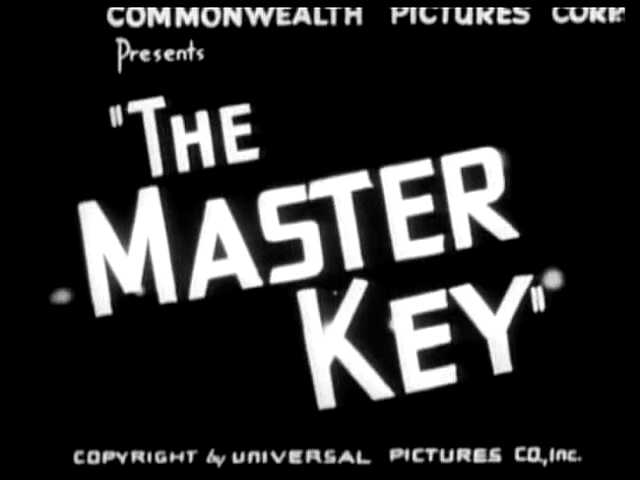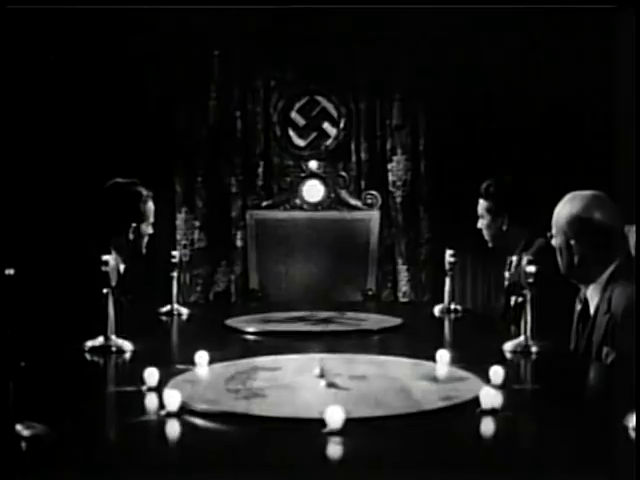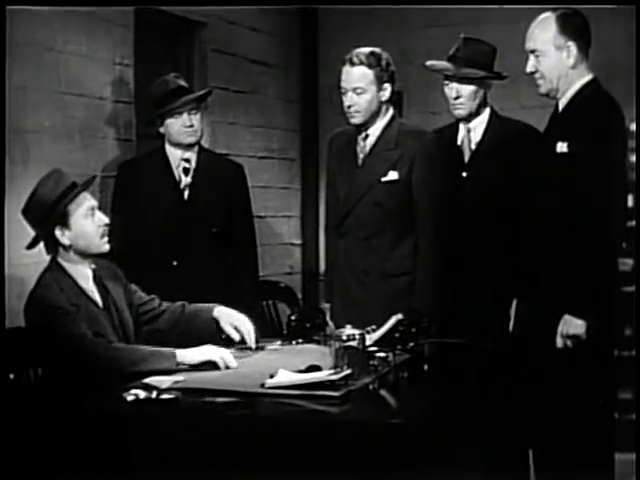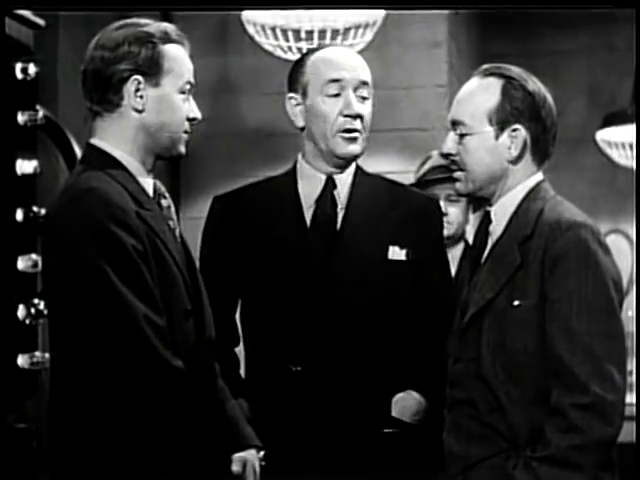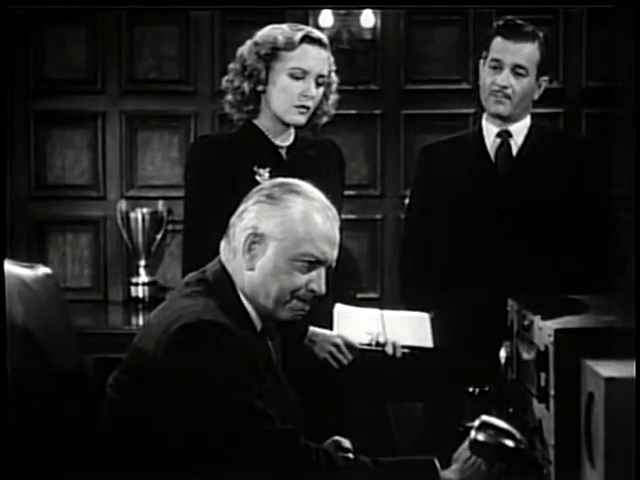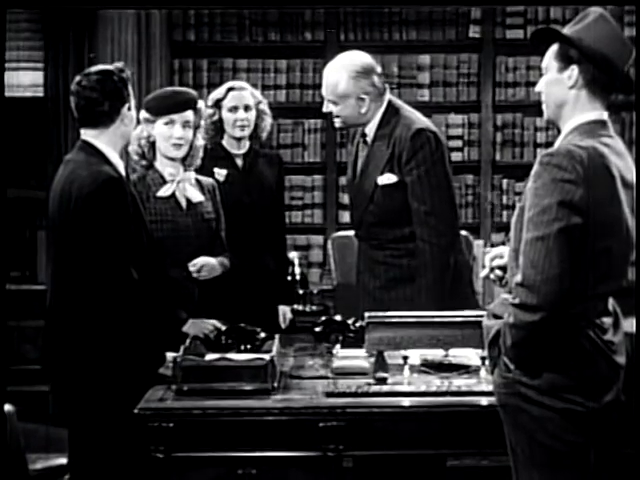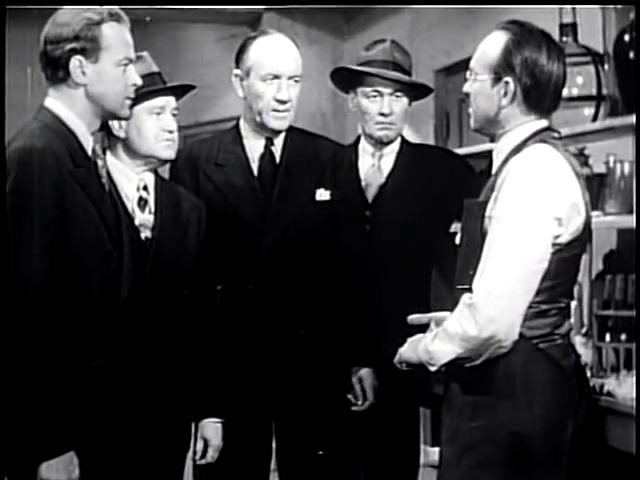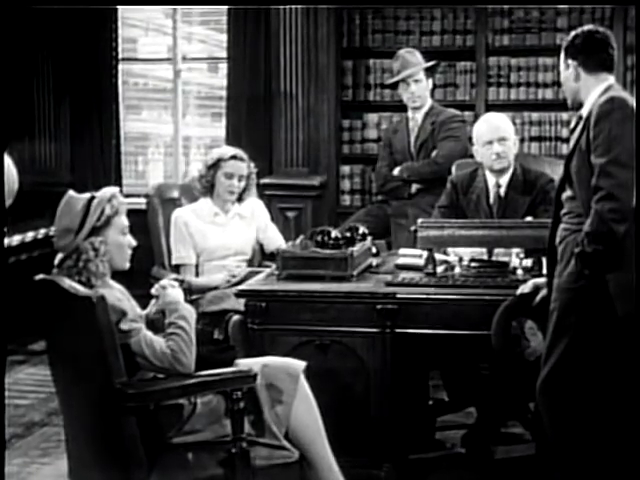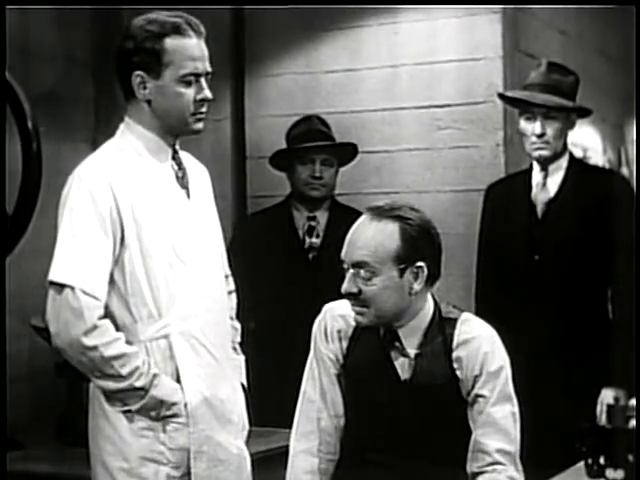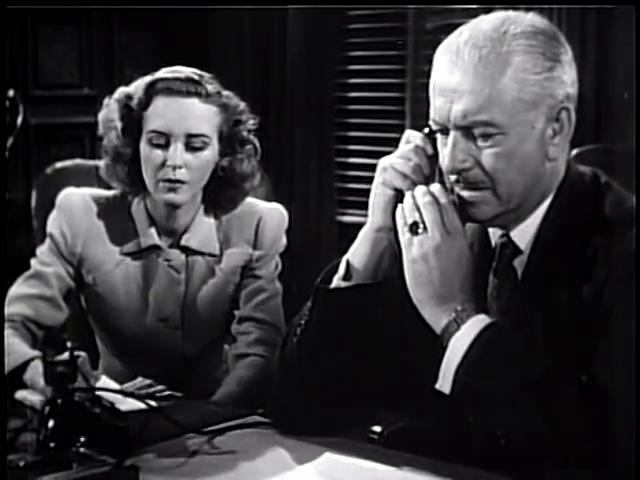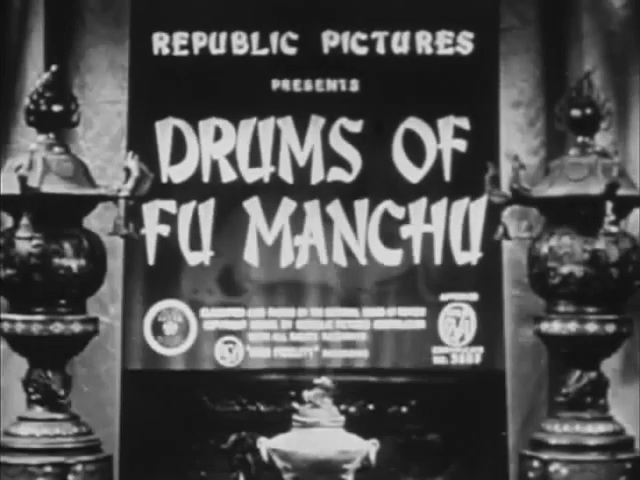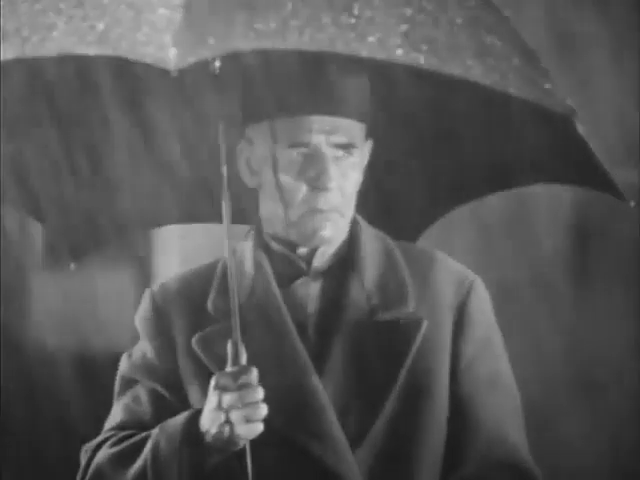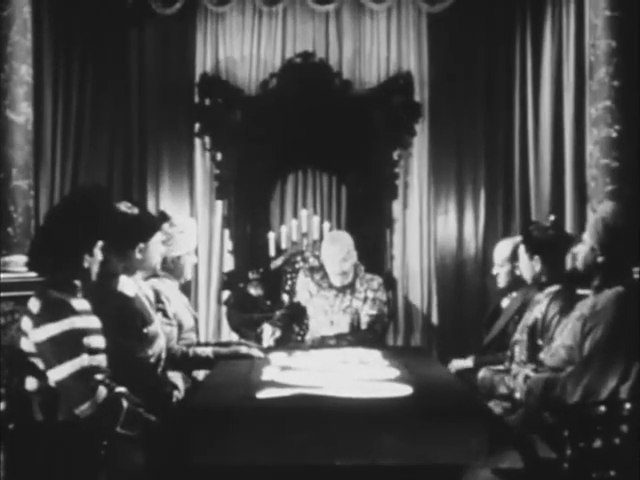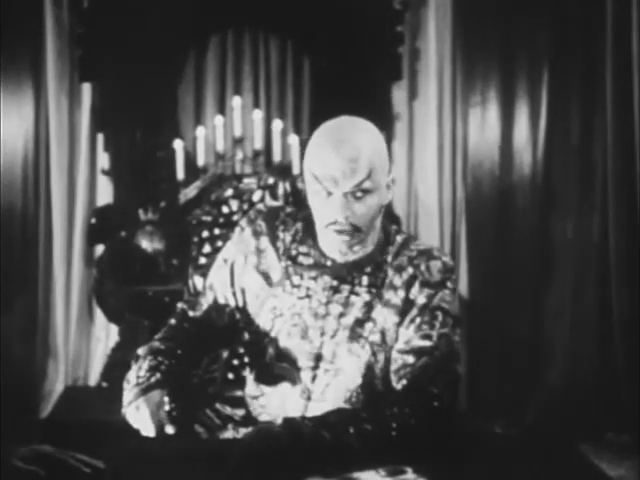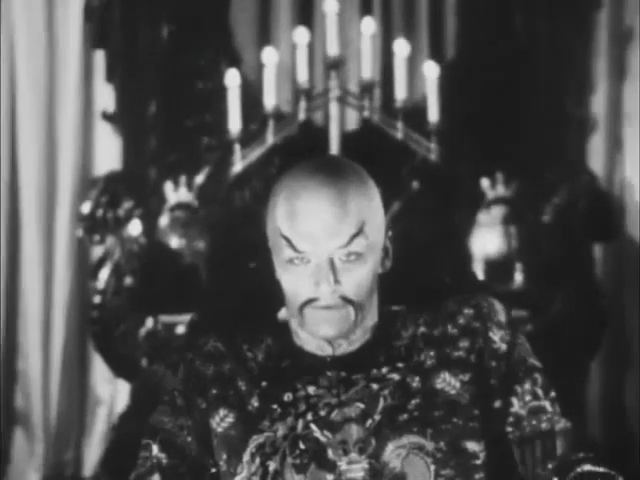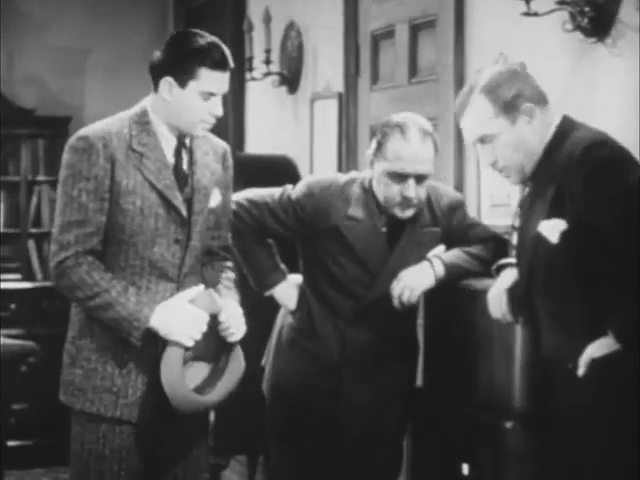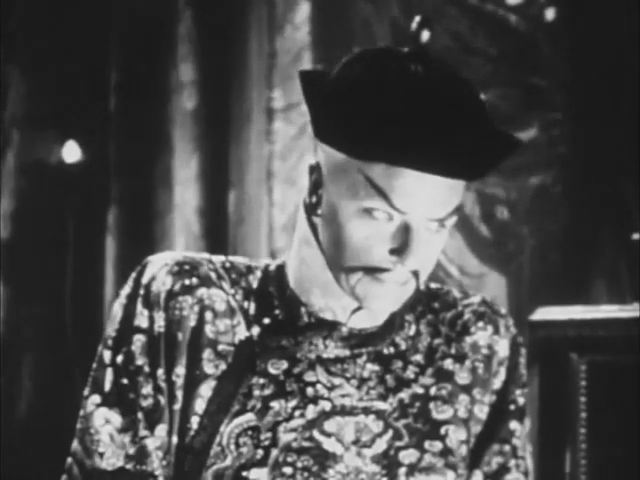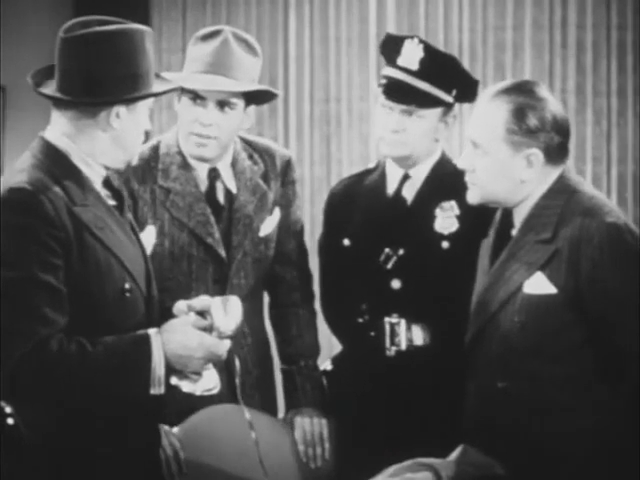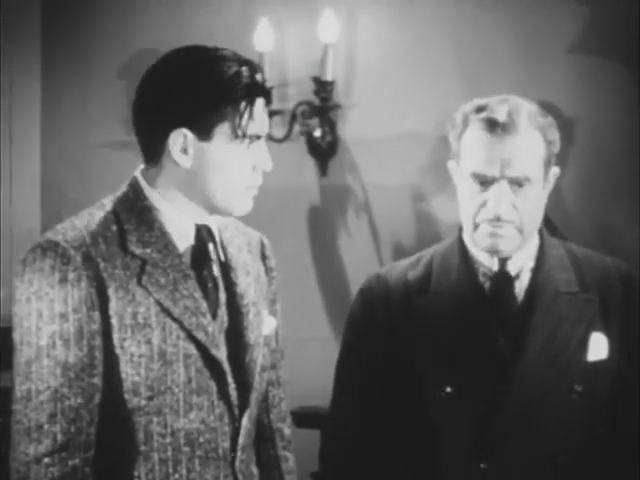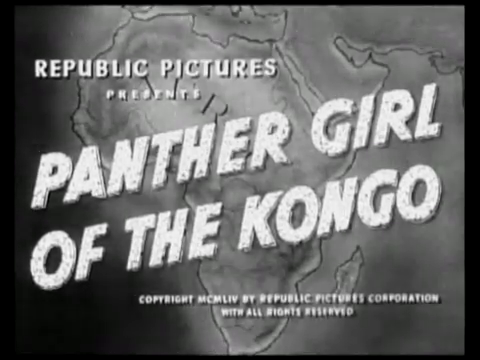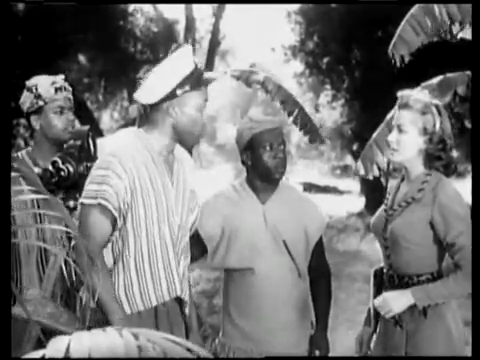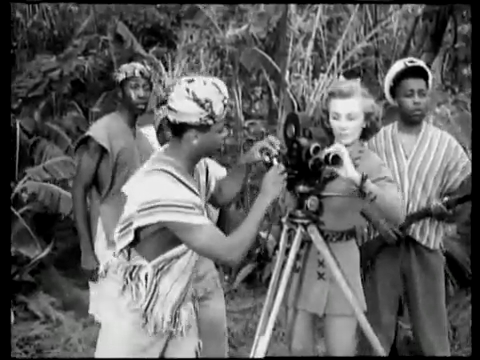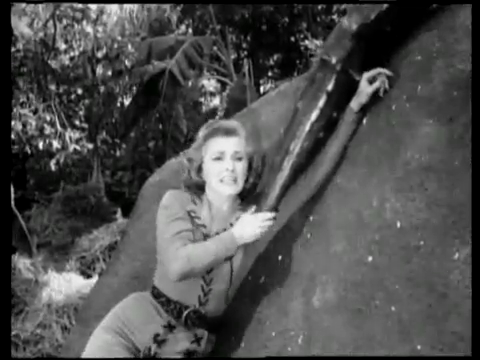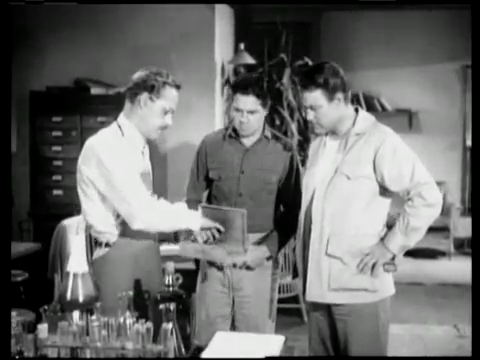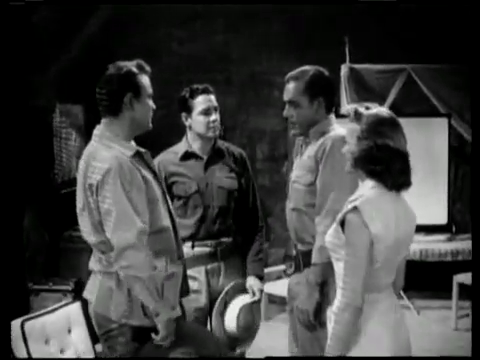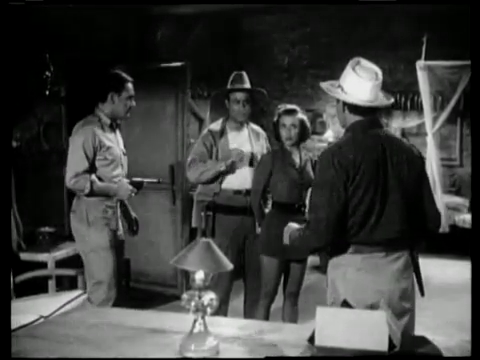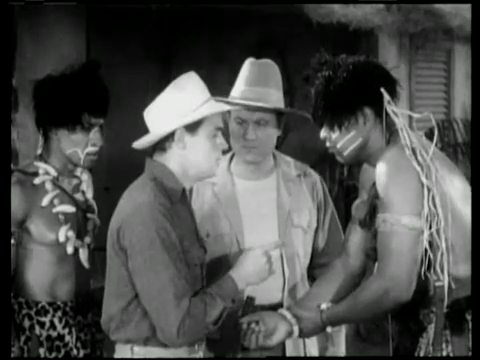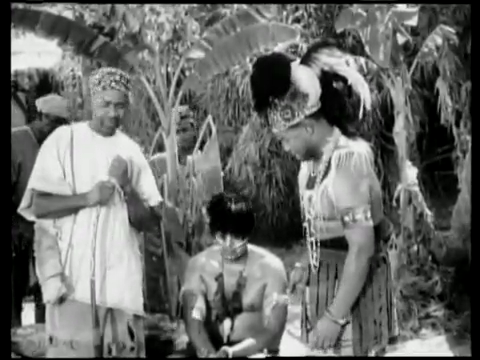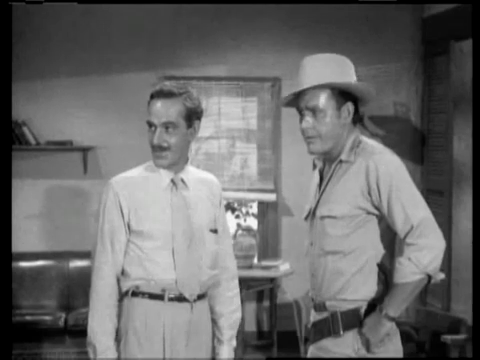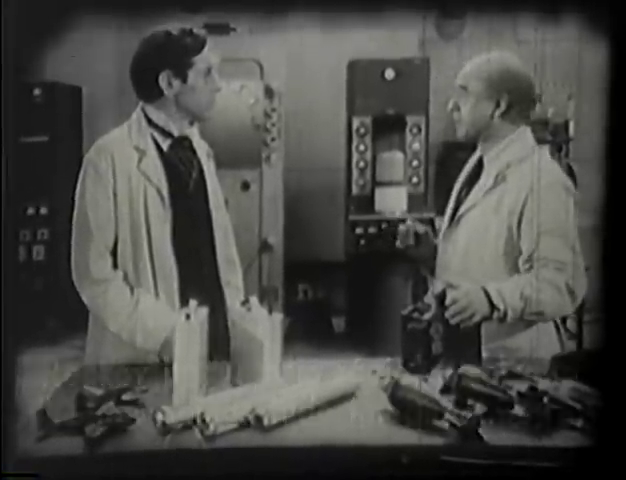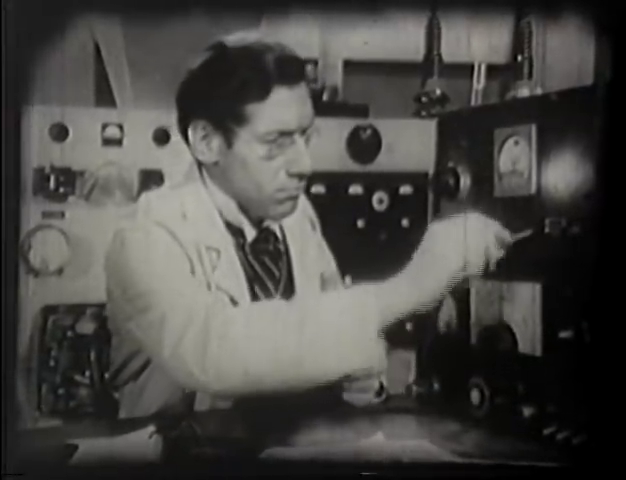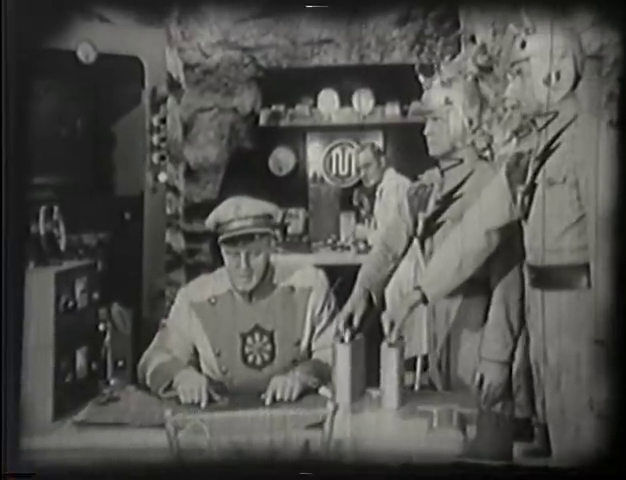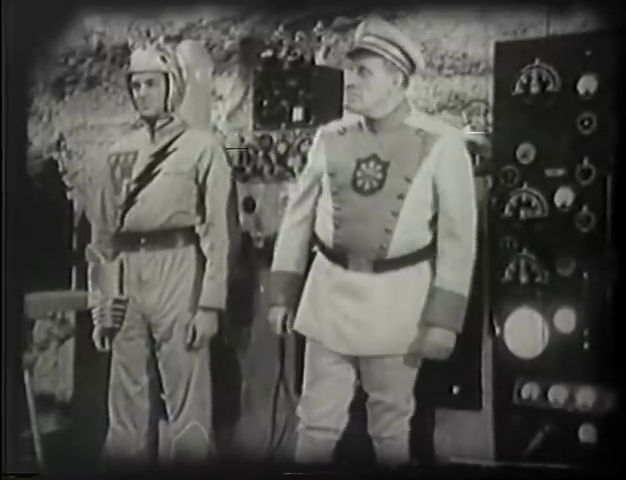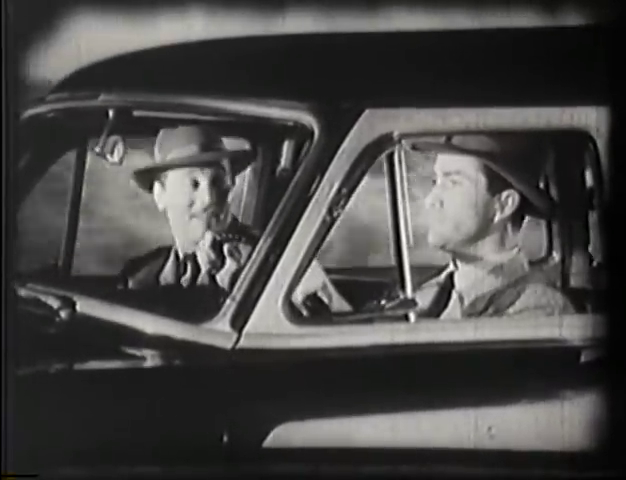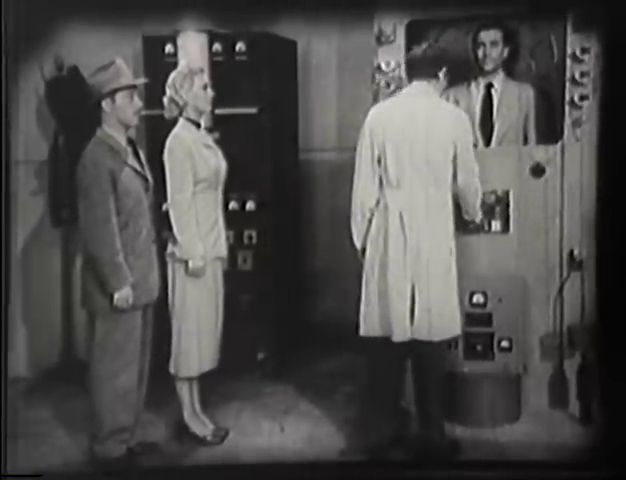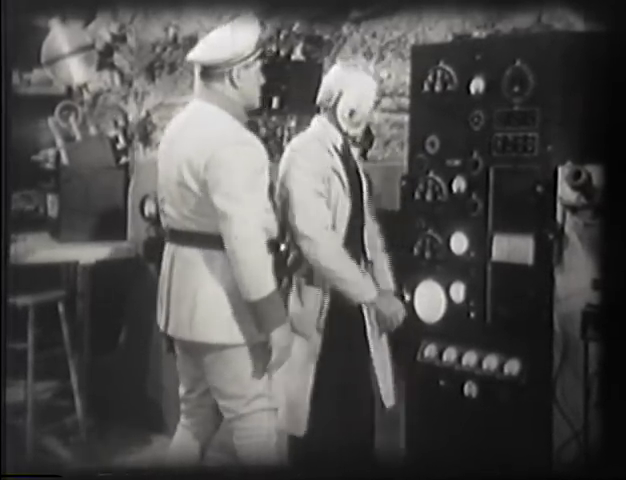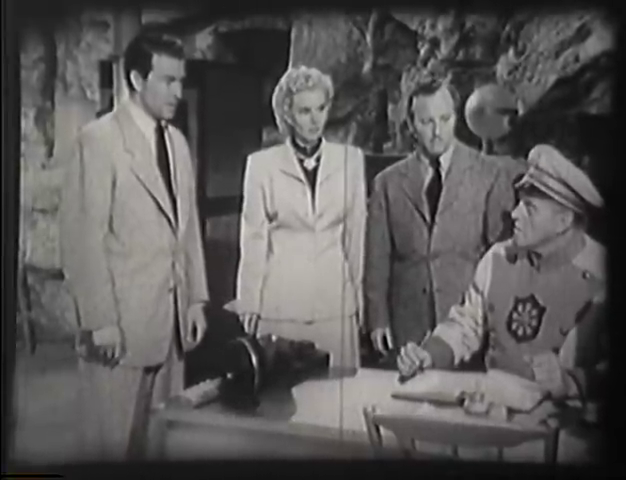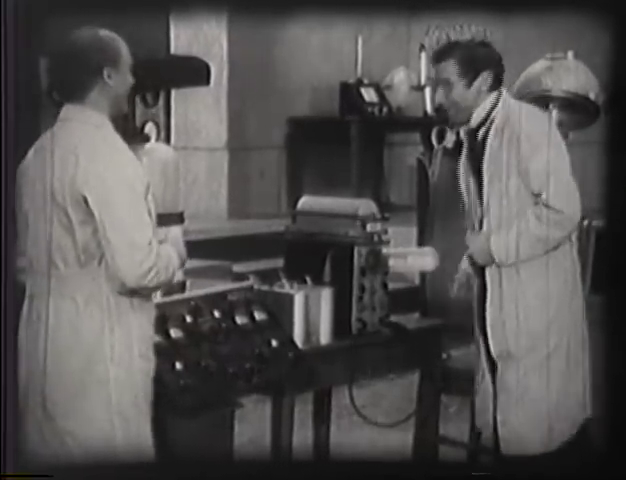-
#469 – The Master Key (1945)
The Master Key (1945)
Film review #469
Directors: Lewis D. Collins, Ray Taylor
SYNOPSIS: A secret Nazi organisation operating in the United States has kidnapped Professor Henderson in order to force him to finish his “auratron” invention that can make gold out of seawater, and use the gold to fund the Nazis operations. Tom Brant, an FBI agent, hunts down the Nazi spy ring with the help of Detective Jack Ryan and his contacts in the police force to find Professor Henderson and bring the Nazis to justice.
THOUGHTS/ANALYSIS: The Master Key is a 1945 serial released by Republic Pictures and comprised of thirteen chapters. The serial centres around a Nazi spy ring operating in the United States, who kidnap Professor Henderson and force him to complete his “auratron” invention, which can turn seawater into gold, which the Nazis will then use to disrupt America’s industrial might. The only thing standing in the way of their evil plans is FBI agent Tom Brant and his companions in the police department. The plot centres around this Nazi spy ring who identify themselves with a key that has the letter “M” and a number engraved on it. They are given their orders by the “Master Key,” who conceals their identity from even the group. That’s all the “Master Key” of the title refers to, and yes, it’s a rather uninteresting premise, given the keys serve no purpose other than to identify the spies, and are used at the start of each chapter to “summon” the master key who explains the plot. The main focus of the plot is Henderson’s invention which apparently turns seawater into gold, an idea which is sounds ridiculous even by the serial format’s standards. The chapters involve the typical plot structure of the heroes trying to rescue the professor and his invention…the amount of serials that enact this same plot is too many to count, and most of them do it better than this one. The plot has very little direction otherwise, and the back-and-forth between the protagonists and antagonists is painfully slow, and explained through long scenes of exposition that slow the pacing down to a crawl. There’s some cliffhangers that incorporate more impressive large crashes or explosions, but they are usually, and obviously, stock footage or models, and the fallout is never really shown, only explained further with the shot of a newspaper front page and even more dialogue.
The characters are the usual bunch you associate with the serial format: there’s the young male leads who get into the fights, the older men who serve as support, and some token women who get the role of journalist or secretary. The villains likewise are uninteresting and have no character or role other than being henchman. The main villain we never see until the very end, instead giving orders through some sort of radio…thing. There’s constantly very little for the viewer to grasp a hold of, and as such, it is difficult to maintain attention on the serial as a whole. There’s some supporting characters including a bunch of younger street-wise teenagers who help out under the watch of Aggie, a similarly street-wise woman. Again, none of the characters really stand out or do anything of merit.
Released in April 1945, The Master Key was released in the very dying days of World War II. As such, it is difficult to see how relevant the whole Nazi spy ring plot was. The wartime serials typically focused on Japan as the primary U.S. enemy, and choosing the Nazis as the villains is perhaps an odd choice at this time. Each chapter opens up with a disclaimer of sorts saying that the serial is fiction that “could never happen,” and states that it takes place in 1938 before the war even started. I assume this was in order to keep the serial in line with the requires of the regulatory bodies, perhaps setting it before the war was necessary to not give the illusion that the Nazis were still a threat to the US in the then dying-days of the war, and that the U.S. was too powerful for something like this to happen anyway. It’s interesting then that they allowed it during wartime: perhaps they needed people to be on their guard, but on the verge of the Nazis being defeated, the tone changed to saying that there was no way that anything like this could ever happen to America. It’s also interesting that the serial clearly identifies the enemies as Nazis and shows their flags in their hideout: again, most serials previously did not mention the Nazis by name or show any of their insignia, instead showing enemies that were working for a “foreign power” which obviously was meant to be the Nazis. Again I assume the requirements of the film regulators changed at the end of the war, and by being able to identify them and place them in the past, it signified that they were a product of history, and no longer a real threat. Also a small note concerning the invention that can apparently turn seawater into gold: it’s so outlandish and nonsensical even by serial standards that it’s very hard to take seriously.
Overall, The Master Key is a poor showing, released at the wrong time. It has very little direction in terms of story or characters, and the long-winded scenes of dialogue and exposition overshadow any action scenes. It exists at a strange point in history where the Nazis were no longer credible or interesting villains, but also before the post-war serials, which turned either to America’s military war heroes battling foreign spies (implied to be the soviet union) or more sci-fi adventures. As such, The Master Key falls between the cracks and fails to find very little relevancy or entertainment value.
-
#468 – Drums of Fu Manchu (1940)
Drums of Fu Manchu (1940)
Film review #468
Directors: William Witney, John English
SYNOPSIS: Villain Fu Manchu intends to locate the sceptre of Genghis Khan, and use its ancient powers to conquer all of Asia. When his Father is killed by Fu Manchu in pursuit of the sceptre, Allan Parker teams up with Sir Dennis Nayland Smith and his assistant Dr. Flinders Petrie, who have fought Fu Manchu in the past. Teaming up with the British army stationed in Asia, they hurry to find the sceptre and Genghis Khan’s tomb before Fu Manchu can do the same…
THOUGHTS/ANALYSIS: Drums of Fu Manchu is a 1940 serial by Republic Pictures comprised of fifteen chapters, and based on the series of novels by Sax Rohmer (Drums of Fu Manchu is the ninth novel in the series, but the serial borrows plot points from the whole series). The serial starts out with Fu Manchu outlining his evil plans to conquer Asia, using the power of the sceptre of Genghis Khan. In order to track it down, he leaves a trail of death and destruction in his wake as he tracks down the clues to his location. Allan Parker is caught up in Fu Manchu’s schemes as his Father is killed by Manchu’s henchman, and looking to get revenge, Allan teams up with Sir Dennis Nayland Smith, Fu Manchu’s old adversary. The plot of the fifteen chapters unfolds in typical serial fashion, as each chapter inches the plot forward as the heroes and villains engage in a back-and-forth of schemes and counter-schemes to try and outdo each other. Where the serial stands out is its varied settings and action sequences, which are fairly well thought out and keep things interesting. The serial borrowing the best bits from the series of novels probably helped in generating ideas for the fifteen chapters. There is, however, a fair amount of repetition in the serial, particularly in the fact that a lot of the plot is driven forward by one side overhearing the other’s plans, and a counter-scheme being devised. It’s a bit predictable, but that’s very much a staple of the format. The serial does fortunately have a very definite sense of direction, and each chapter edges the plot forward a little towards a goal that is defined from the outset, and simple enough to follow.
The characters are all fairly standard for a serial, with Allan Parker being the typical action-based male lead who does all the stunts and fistfights. Nayland Smith is the protagonist of the novels, but takes a supporting role here, as these serials always require a more action-based lead. The usual lack of female characters are also featured in the serial, with Mary Randolph being the sole female lead who appears very infrequently and provides no contribution to anything other than being the daughter of another more important character. There’s also Fu Manchu’s daughter who plays a role as a minor villain. Obviously the most interesting character is Fu Manchu himself, a villain that has become somewhat cultural icon…for better or worse. His iconic image is fairly recognisable, and he has been the focus of quite a few movies across the decades, meaning his image has become this recognisable figure. As you might expect however, this image is mired in controversy, and has cemented a specific image of “orientalism” in the west for many years (obviously Fu Manchu wasn’t the first character to do this, but his is one of the most enduring). He is played, as most southeastern Asian characters are, by a white man in make-up to “look” Chinese. His attitudes and actions also accentuate a “foreignness” that portrays a difference and opposition to western values. He is definitely one of the more interesting villains seen in a serial, but it relies on some very problematic depictions.
Drums of Fu Manchu is regarded as one of the best serials that was produced, and it easy to see why: the action sequences are varied and intense, and there’s a lot of effort put into the serial in all of its aspects. A lot of consideration is put into depicting Fu Manchu as evil, particularly in the harsh lighting shots that create shadows across his face and give him a very malicious look. A rather unique aspect of this film is the ending, in which Fu Manchu actually survives and escapes the plunge to his doom, promising revenge. It was actually against the film regulator’s guidelines to have film villains survive at the end, presumably as it was morally important to show villains getting justice for their crimes (even if that justice is being hurled off a cliff…). Apparently, an exception was made because the novels had Fu Manchu escaping at the end, and also that the series very much had the potential for a sequel in which Fu Manchu could ultimately meet his end. I think there definitely would have been a sequel, but apparently the U.S. state department put a stop to it because the Chinese ambassador to the U.S. had formally complained about the depiction of Chinese people, and China was also an ally in World War II against the Japanese. This is also probably why the villains in wartime serials were typically Japanese from that time forward. Overall, Drums of Fu Manchu is a good example of the serial format, but comes with a big caveat in its problematic depictions of Chinese people and Asian cultures. The plot has direction, the action sequences are varied and well executed, and there’s generally a good amount of consideration and effort in most of the film’s production. It is easy to see why it is one of the strongest examples of the serial format, although as with the rest of them, it suffers from a fair amount of repetition.
-
#467 – Panther Girl of the Kongo (1955)
Panther Girl of the Kongo (1955)
Film review #467
Director: Franklin Adreon
SYNOPSIS: Jean Evans, a member of a wildlife foundation, is in Africa taking photos of local wildlife when she encounters a giant crayfish that nearly kills her. She teams up with Larry Sanders, a big game hunter, to stop the creature and discover it’s origins.
THOUGHTS/ANALYSIS: Panther Girl of the Kongo is a 1955 serial produced by Republic Pictures and comprised of twelve chapters. The serial centres around Jean Evans, who works for a wildlife foundation taking photographs of wildlife. She is known as “Panther girl” because…I don’t know, she rides an elephant sometimes and dives off cliffs; the only panther I recall seeing is at the end screen. Anyway, she encounters a giant crayfish that attacks her, but is saved by Larry Sanders, a big game hunter in the area. The two team up to try to stop the monster and unravel the mystery of it’s origins, while trying to stop two outlaws in the area. This is the cornerstone of the plot, alongside Dr. Morgan, a scientist also in the area, has created the giant monster to scare off people from a mine full of diamonds while he harvests them all. Obviously, this type of plot has been done to death, and is perhaps more famously associated with a vast chunk of episodes of Scooby-Doo, meaning it’s hardly an interesting watch nowadays when it’s been done and done again. There’s also not much of a plot besides this, and the heroes trying to stop the giant crayfish monster thing. Trouble is, it doesn’t show up for a good chunk of the serial, and so Jean and Larry are left to do the typical back-and-forth with Morgan’s henchman, as they make plans, set traps, and start fistfights with each other. As it is, the plot rarely has any direction, and the stakes are also pretty low, since again it’s not all for world domination or anything, just a man wanting to mine some diamonds in the middle of nowhere.
Quite rarely for a serial, the main character is a woman. Jean Evans is the “panther girl” due to her prowess in the jungle (even though there’s no panthers that we see), and she actually does something other than being kidnapped. The only other serial that does this to this degree is perhaps Jungle Girl (more on that later). However, when the script requires it, she does revert to the typical screaming damsel in distress, and the male lead swoops in to save her. He also does most of the shooting and punching, but still Jean’s character is central to the plot. Larry is just a typical male lead with no real character. The villains also are just typical henchman and a “mad” scientist who isn’t all that mad, just wants to get rich. The setting of non descript “Africa” and its stereotypical depiction of “tribes” is problematic and presenting the entire continent in this way is a depiction that prevailed for decades thanks to films such as these.
The serial is quite similar to the Jungle Girl serial released in 1941, particularly with regards to a jungle-savvy female lead. This is also not coincidental, as this serial uses a lot of the footage from the serial, particularly the on-location stuff and animals. In 1955, the serial format was really on it’s last legs, and it’s no surprise that the studios wanted to do as little new stuff as possible (although cost-cutting and re-using footage has been a staple of the serial format for years at this point). Since Jungle Girl was released fourteen years before, and theatre-goers probably wouldn’t have seen it or forgotten about it due to the lack of home media releases, and the only way to see older serials would be to watch re-releases at theatres, which I believe were somewhat rare, and even then they really don’t benefit from repeated viewings. The re-used footage is pretty heavy in the finale, when the action sequences are almost entirely made up from this footage, and the transition between the different footage is very awkward and disjointed. For example, you can clearly see “Jean’s” outfit change from scenes as she instantly switches from a miniskirt to swinging from the trees in leggings. The “giant” crayfish is obviously not a giant one, just a regular one filmed amongst miniatures. It’s not particularly convincing, especially when the “giant claw” attacks people with the rest of its body just offscreen. Overall, Panther Girl of the Kongo is a fairly weak serial, in which it’s most interesting aspects are just bits of re-used footage. The plot is non-directional and has fairly low stakes, alongside often feeling it’s just padding for the more interesting re-used footage. The emphasis on the female lead is a more unique aspect, but she is reverted to the typical “damsel in distress” when the plot wants to do a more typical set-up of the female being the victim. The serial is very low on imagination and spectacle, and is emblematic of the serial format in it’s twilight years as the format became unviable with the introduction of televisions in homes.
-
#466 – The Lost Planet (1953)
The Lost Planet (1953)
Film review #466
Director: Spencer Gordon Bennet
SYNOPSIS: Investigating a suspected U.F.O. crash in the mountains, reporter Rex Barrow and photographer Tim Johnson head there to check it out, but find themselves captured and sent to the planet Ergro by scientist Dr. Grood, who sends them to work on the planet to mine minerals and build his inventions to take over the universe. Rex, Tim, captured scientist Professor Dorn and his daughter Ella must overcome Grood’s mind control device and other contraptions as they try to put a stop to his evil plans…
THOUGHTS/ANALYSIS: The Lost Planet is a 1953 serial produced by Columbia Pictures and comprised of fifteen chapters. It is the last science-fiction serial that the studio produced (although the studio itself only produced three serials which could be fully described as “science-fiction”). The serial starts out with reports of a flying saucer crashing on Mount Vulcan, and reporter Rex Barrow and photographer Tim Johnson go to investigate, but end up getting captured along with Ella Dorn, and taken by rocket ship to the planet Ergro, where evil scientist Dr. Grood has taken over the planet to mine a new element that fuels his evil inventions. The plot of the serial revolves around trying to stop Grood and his various inventions, most notably his mind control device, which places prisoners in his power. It’s not only that though: this element that Grood is mining also fuels inventions such as a death ray, mind-reading device, invisibility and a whole host of other sci-fi tropes. Normally just one of these inventions would be enough for a serial to focus on, but here they’re all thrown into the mix. While this helps with keeping the serial varied across its fifteen chapters, it also has the effect of having little focus on any one of them. The one which stands out most is the use of the mind-control/hypnosis device. which is probably the least interesting of them all, and a lot of the plot just revolves around being hypnotised and de-hypnotising certain characters, creating a predictable back-and-forth.
One of the interesting aspects of this serial is that it seems to have been planned to be a sequel to the Captain Video serial. A lot of the same actors return, and the costumes and props are obviously re-used from it (for example, the outfits of the “video rangers” are used for the uniforms of the brainwashed people on Ergro). Whether the idea of making this a sequel was scrapped early on for some reason is anybody’s guess. The characters themselves are an unassuming bunch, and fit the typical parts that these serials provide. Unlike Captain Video though, this serial actually has a female character, although as usual, her only noteworthy aspect is being related to another more important male character. There’s a number of villains that have their own unique personalities and play off against one another, but it never really develops into something remarkable, and the web of villains just becomes confusing and muddled. Particularly as the serial switches between Earth and Ergro constantly.
In terms of production, there’s some decent sets in this serial. The rocket ship looks good, and the space travel sequences between Earth and Ergro look pretty good, considering in 1953 no one had ever been into space. The acting is not great, but there’s definitely worse performances I’ve seen in serials. It might have gotten away with it, but some of the dialogue is pretty dull and loaded with technical jargon that the actors seem to be convinced about saying. One other problem is that both Earth and Ergro look exactly the same; obviously because both are filmed in the California hills like every other serial, and as such this adds to the confusion surrounding the story, as both planets look so alike you don’t know where you are some of the time. Another curious decision about the making of the serial is that there’s none of the typical fistfights you get in nearly every serial: the only time someone throws a punch is when Rex is turned invisible, and so even then, you can’t see him actually throw the punch. This is incredibly strange, most notable because Spencer Gordon bennet, the director, practically invented the choreography for serial fistfights. Maybe they wanted to focus on the scientific inventions and their varied effects for the action, but even then, as mentioned, this is only the third sci-fi serial Columbia made, and it seems a bit out of their comfort zones.
Overall, The Lost Planet is a bit of a mess, and suffers from attempting to do too much. The inventions and sets are cool, but they’re all just props without a decent plot to coalesce around. The stakes are pretty detached as most of the action unfolds on this non-descript planet, and the characters fail to make an impact despite having such a large cast. The lack of action in this serial is very questionable, and the array of inventions don’t really fill in the gap. The whole serial is full of typical set-ups and schemes, but fails to give any motivation for the characters, or direction for a plot to develop.
